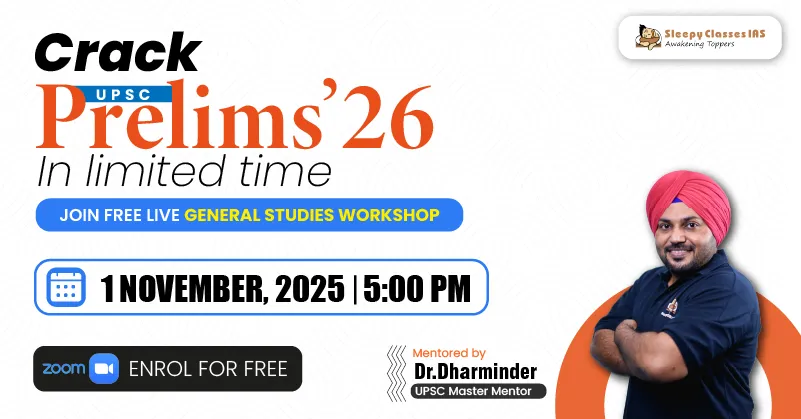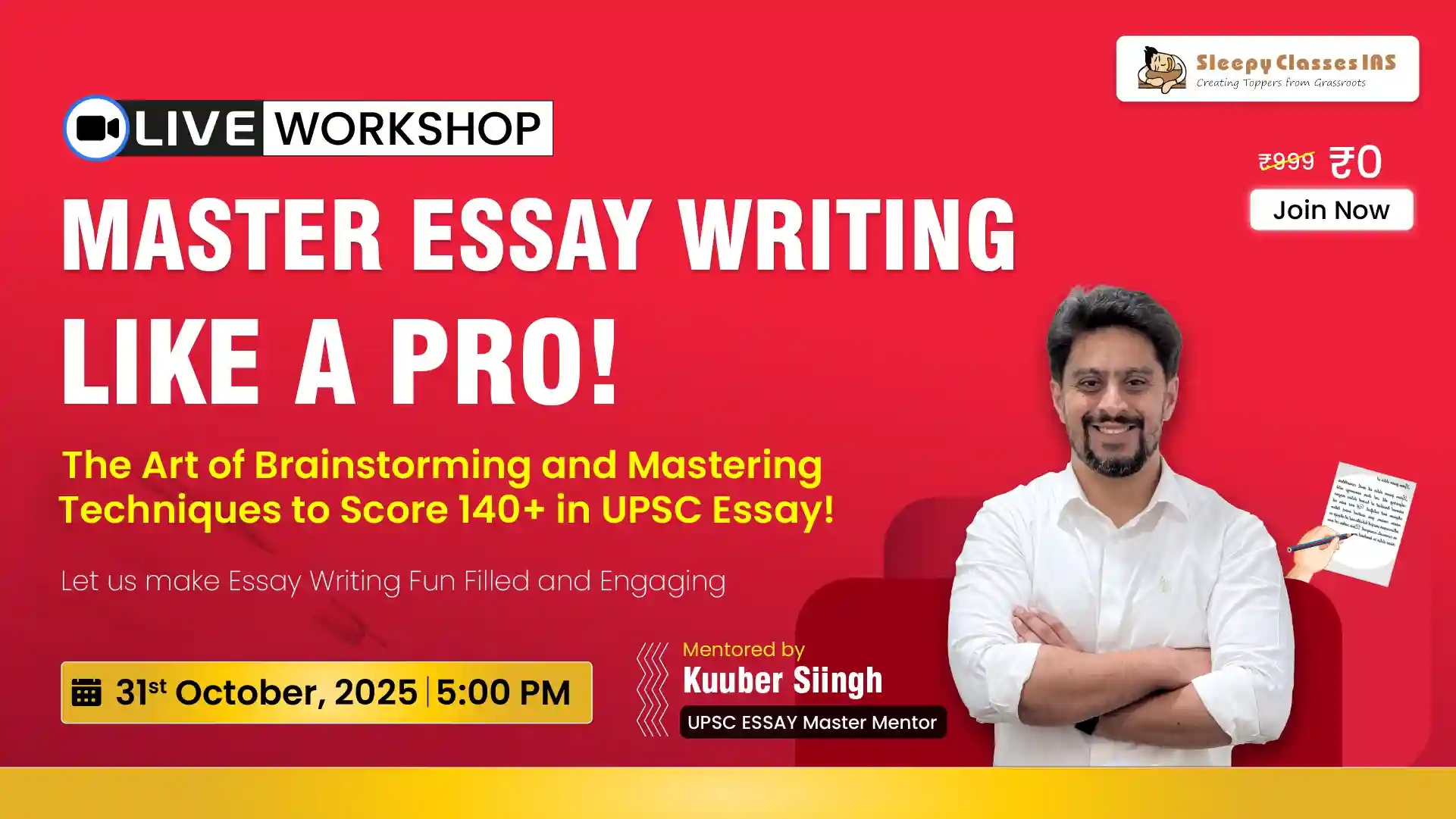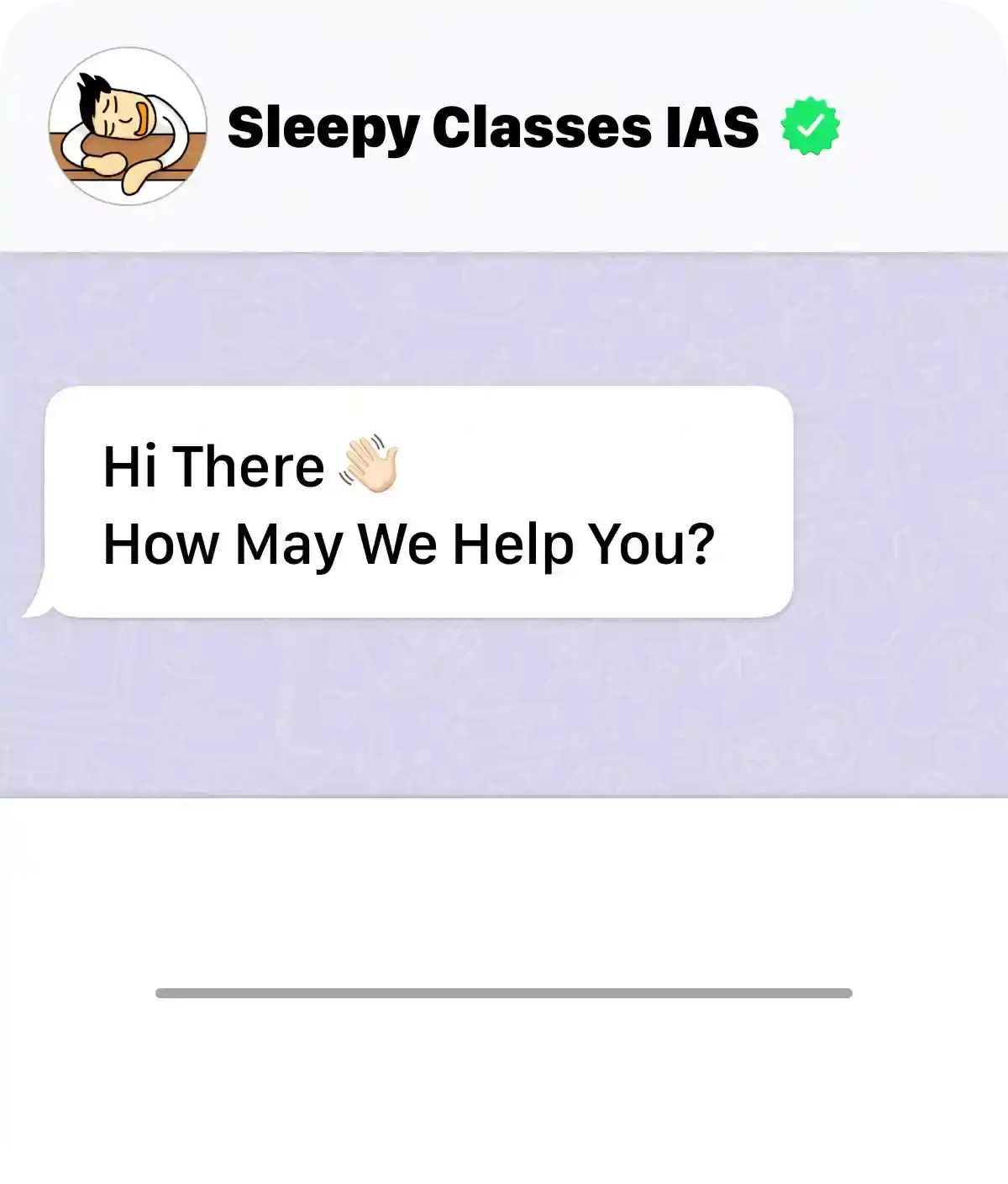GS Paper 4: Developing an Ethical Framework for Case Studies
Aptitude and Foundational Values for Civil Services, Editorials, ESSAY, UPPCS, UPSC, Using SleepyClasses
GS Paper 4 in the UPSC Mains examination focuses on Ethics, Integrity, and Aptitude—a critical paper that evaluates an aspirant’s moral reasoning, decision-making ability, and ethical judgment in real-world situations. A crucial part of this paper is case studies, where candidates must apply ethical principles to resolve administrative, social, and professional dilemmas.
This article explores how to develop an ethical framework for case studies in GS Paper 4, key ethical theories to apply, and how to structure answers to maximize scores.
Key Takeaways
✅ Understanding GS Paper 4: Covers ethical concepts, moral philosophy, integrity, governance, and case study application.
✅ Developing an Ethical Framework: Use principles from Utilitarianism, Deontology, Virtue Ethics, and Gandhian Philosophy.
✅ Application of Ethics in Case Studies: Integrate justice, empathy, transparency, and accountability in decision-making.
✅ Using Reports & Real-Life Examples: Quote sources like UNDP Human Development Report, Lokpal Act, and SDG Goal 16 on Justice & Institutions.
✅ Answer Writing Techniques: Structure answers with ethical dilemmas, stakeholder analysis, and balanced solutions.
Understanding the Role of Case Studies in GS Paper 4
Case studies in GS Paper 4 are designed to test an aspirant’s ability to:
- Apply ethical reasoning to real-life dilemmas.
- Balance competing interests while upholding public service values.
- Take impartial and legally sound decisions.
- Ensure fairness, justice, and accountability in governance.
Common themes in case studies include corruption, conflict of interest, whistleblowing, public welfare vs. legality, and crisis management.
By structuring responses using an ethical framework, candidates can ensure their answers are logical, balanced, and well-reasoned, which is key to scoring high in GS Paper 4.
How to Approach GS Paper 4 Case Studies?
A structured approach ensures that answers are logical, ethical, and aligned with administrative principles.
1. Identify the Ethical Dilemma
Each case study presents a moral conflict where multiple stakeholders are affected. Identifying the root ethical issue is the first step.
📌 Common Ethical Dilemmas in GS Paper 4:
- Conflict of Interest: A government officer is torn between personal benefits and public duty.
- Whistleblowing & Transparency: Should an officer expose corruption at the risk of losing their job?
- Public vs. Private Interests: Balancing corporate demands with environmental sustainability.
- Human Rights vs. Law Enforcement: Handling protests or public dissent within legal frameworks.
Example:
A District Collector finds that a private company is violating environmental norms while promising employment to locals. Should he prioritize economic growth or environmental sustainability?
📚 Where to Study?
- United Nations Development Programme (UNDP) Report on Governance & Ethics.
- OECD Report on Public Integrity: Check Here
- Lokpal & Lokayukta Act for whistleblower protection in India.
💡 Tip: Always highlight ethical conflicts explicitly in your answer before suggesting solutions.
2. Analyze Stakeholders Involved
Understanding who is affected and how helps in proposing ethical solutions.
📌 Common Stakeholders in Case Studies:
- Government Officers & Bureaucrats – Must uphold integrity and fairness.
- Citizens & Society – Expect transparency, justice, and welfare.
- Corporates & Private Entities – Often driven by profit but must follow ethical business practices.
- Media & NGOs – Play a role in accountability and policy advocacy.
Example:
A police officer must decide whether to arrest a protest leader. Stakeholders include the government (law enforcement), citizens (freedom of expression), and media (public perception).
📚 Where to Study?
- Article 19 of the Indian Constitution (Freedom of Speech & Expression).
- Whistleblower Protection Act (2014) – Governs ethical reporting of corruption.
- Global Ethics & Governance Reports by Transparency International: Read Here
💡 Tip: Present a stakeholder chart in your answer to visualize conflicts & responsibilities.
3. Apply an Ethical Framework to Decision-Making
Using an ethical framework strengthens your GS Paper 4 answers and adds depth to your reasoning.
📌 Ethical Theories to Use in Case Studies:
- Utilitarianism (John Stuart Mill) – Choose the action that maximizes overall happiness.
- Deontology (Immanuel Kant) – Follow duties and obligations irrespective of consequences.
- Virtue Ethics (Aristotle) – Act in a way that reflects moral virtues like honesty & compassion.
- Gandhian Ethics – Emphasizes truth (Satya), non-violence (Ahimsa), and Sarvodaya (welfare of all).
Example:
A bureaucrat faces pressure to award a government contract to an influential politician’s company. Applying deontological ethics, he must follow procurement laws despite political pressure.
📚 Where to Study?
- NCERT Class 11 & 12 Ethics Books – Cover moral philosophy.
- Stanford Encyclopedia of Philosophy on Ethics: Explore Here
- Gandhi’s Views on Ethics & Leadership: Check Here**
💡 Tip: Always explain why you chose a particular ethical approach over others.
4. Present a Balanced & Practical Solution
While taking a stand, ensure it is ethical, practical, and legally sound.
📌 Framework for Solution-Oriented Answers:
- Legality: Does the action comply with constitutional & legal provisions?
- Integrity & Accountability: Is the decision transparent and fair?
- Welfare Maximization: Does it balance individual rights & societal needs?
- Precedents & Best Practices: Are there examples of similar cases with ethical resolutions?
Example:
A civil servant faces public protests against a dam project. A balanced solution would include environmental impact assessment, public consultations, and alternative solutions like compensatory afforestation.
📚 Where to Study?
- UN Sustainable Development Goal 16 (Peace, Justice & Strong Institutions).
- World Bank Report on Ethical Public Administration: Check Here
💡 Tip: Use a flowchart to compare ethical vs. unethical solutions.
How to Structure Your Answers for GS Paper 4 Case Studies?
A well-structured answer ensures clarity, coherence, and balance.
📌 Introduction
- Define the ethical dilemma in 2-3 lines.
- Briefly state the ethical principles involved.
📌 Body
- Identify Stakeholders → Who is involved? What are their concerns?
- Analyze Ethical Dilemma → Is it legal? Is it just? What are the implications?
- Apply Ethical Theories → Justify your stance using Utilitarianism, Kantian Ethics, or Virtue Ethics.
- Propose a Solution → Ensure fairness, transparency, and accountability.
📌 Conclusion
- End with a progressive and ethical policy recommendation.
- Cite a relevant case study or government policy.
💡 Tip: Write in bullet points where necessary for clarity.
Final Thoughts
Case studies in GS Paper 4 test a candidate’s ability to think critically, apply ethical reasoning, and make morally sound decisions. Using structured answers, ethical theories, stakeholder analysis, and real-world examples can significantly improve your scores.
For structured preparation, explore GS Paper 4 courses, case study discussions, and test series at UPSC Mains Courses.
By practicing balanced, evidence-based, and ethical responses, aspirants can master GS Paper 4 and enhance their final UPSC Mains score.
🚀 Start Practicing Today & Master Case Studies in GS Paper 4!





